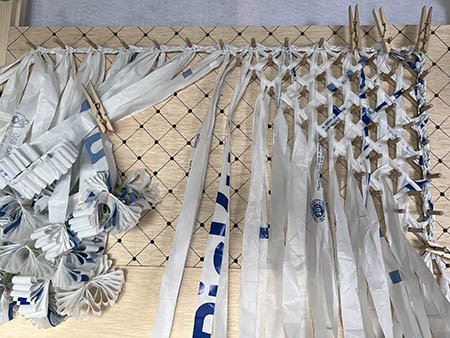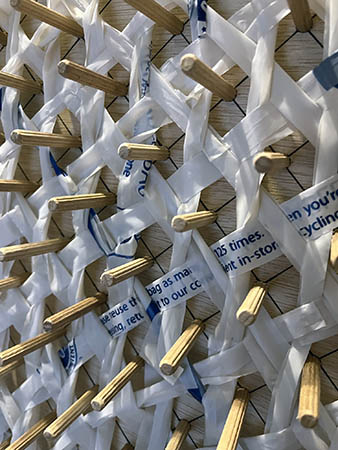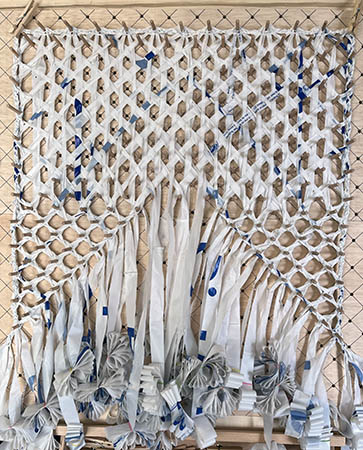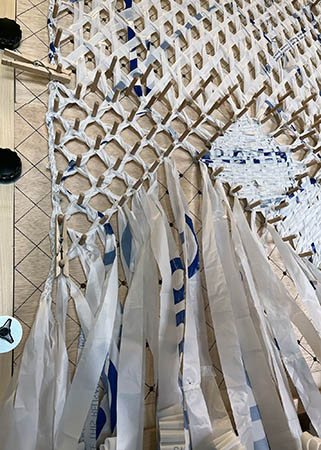
It is time to revisit the grocery bag – bobbin lace concept. I was approached about the possibility of a big project, but can’t reveal anything yet. I need to present my idea of the large project and a sample of the potential stitches. The sample will help bring my abstract pattern into the real-world. Lets break out the peg-board, again.

I remember fighting the plarn (plastic yarn) throughout the last pattern. With more thought, I’m convinced it was due to the stitch I chose. The tulle stitch has three twists in a row (cttt). The plarn rarely keeps a single twist, let alone three. So, I would make a stitch, move on to the next set of stitches, and have to re-twist the last half of the previous, again. This was both frustrating and slow going. Step 1 – get rid of the tulle stitch. Check mark.

A cloth stitch trail was really the only other unique part of my previous pattern, so this sample is important to see how the plarn takes to other stitches. I am happy to report, it seems to be going much better than I could have hoped. As you can see from the pictures, the stitches look great, and re-doing one twist is far better than three.




